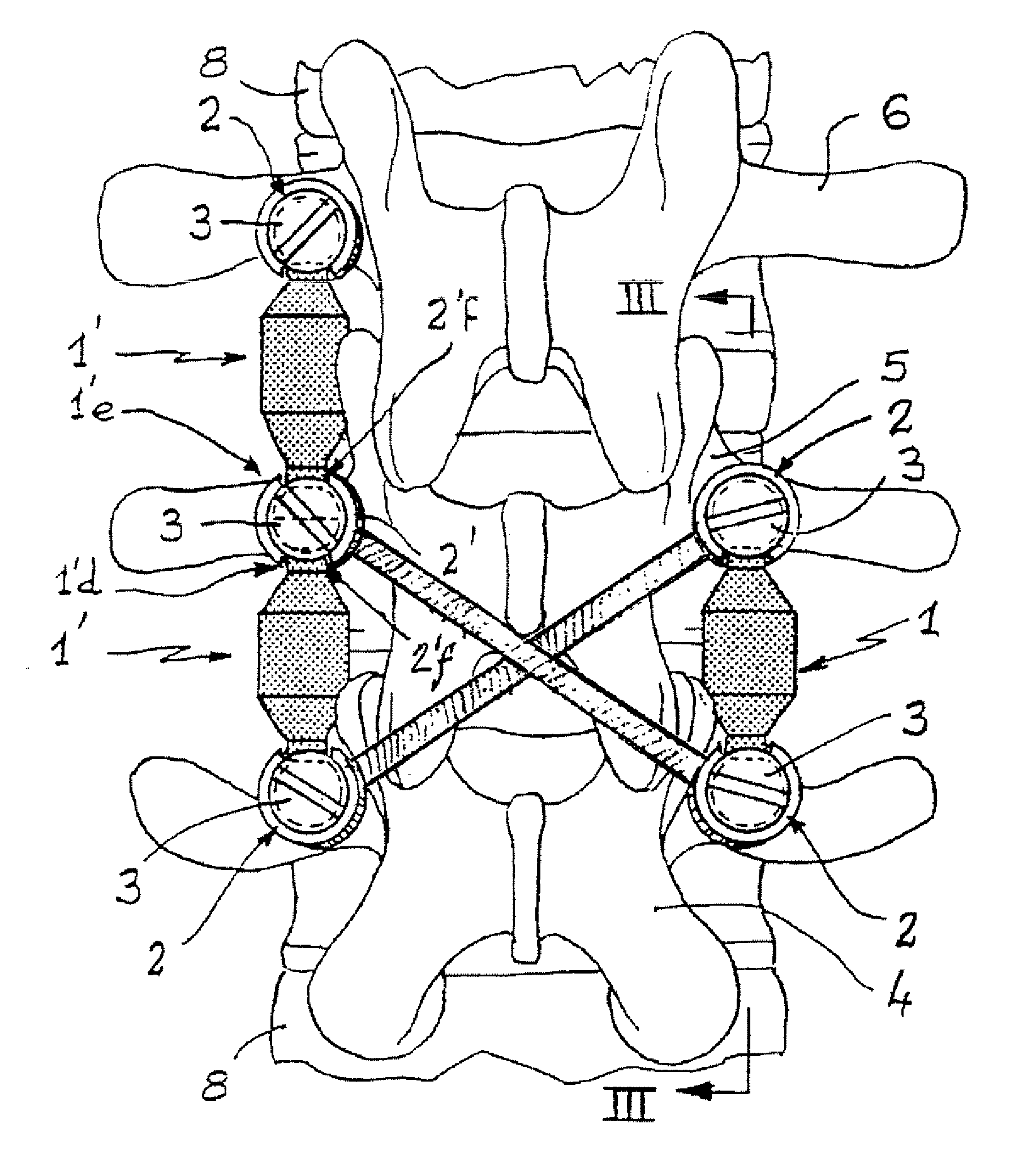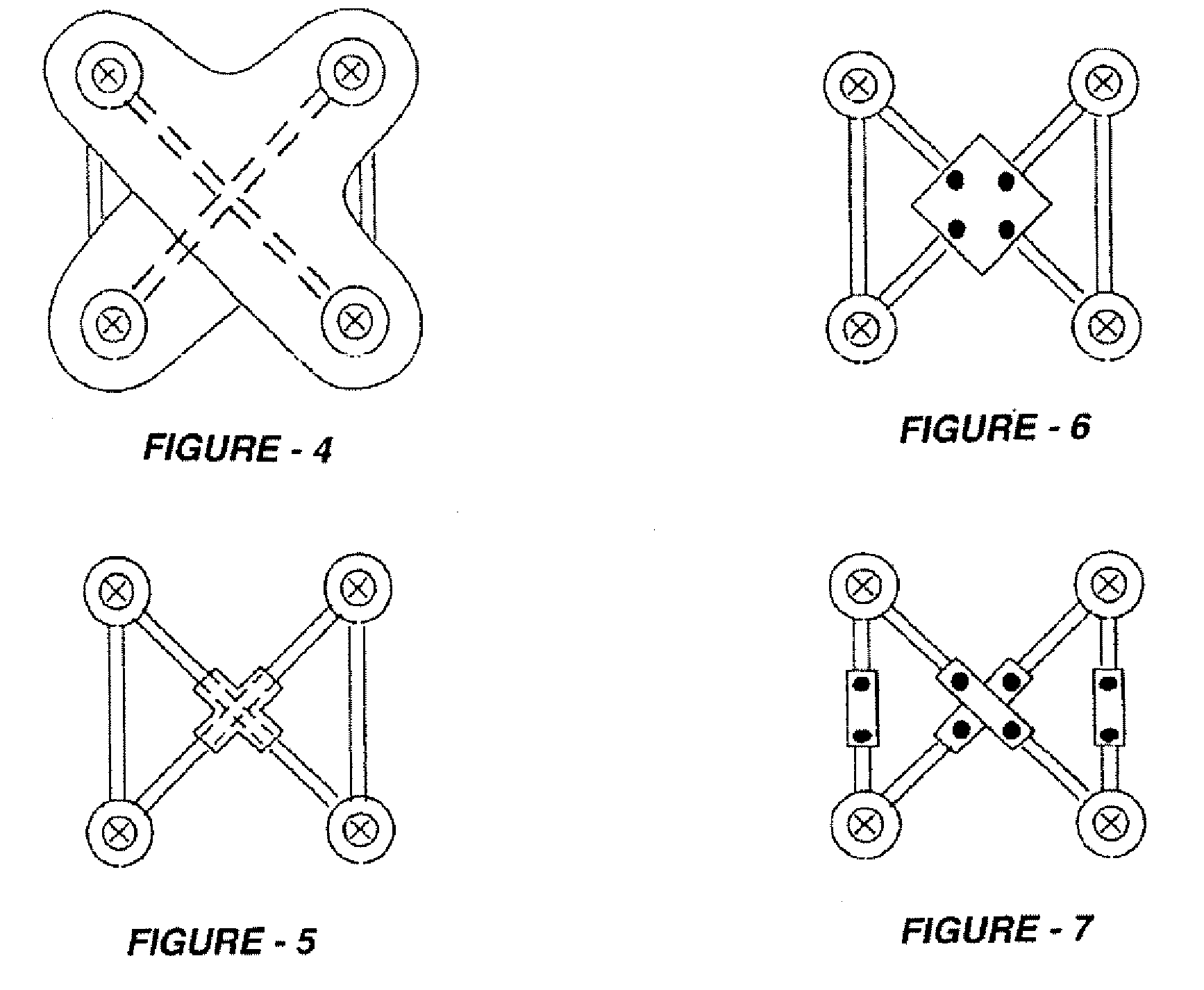Cross-coupled vertebral stabilizers incorporating spinal motion restriction
a vertebral stabilizer and cross-coupling technology, applied in the field of orthopaedic spinal surgery, can solve the problems of increasing tension, reducing pressure on spinal nerves, and increasing distraction,
- Summary
- Abstract
- Description
- Claims
- Application Information
AI Technical Summary
Benefits of technology
Problems solved by technology
Method used
Image
Examples
Embodiment Construction
[0054]FIG. 1A is an anterior view of a cable-based cross-coupled vertebral stabilizing mechanism disclosed in U.S. Pat. No. 6,248,106, incorporated herein by reference. FIG. 1B is a drawing which shows the mechanism of FIG. 1A from a lateral perspective. In this illustration, the mechanism is used to join upper and lower vertebrae 102 and 104, respectively, though the mechanism is applicable to multiple levels, as shown in FIGS. 2 and 3. Note that some form of intervertebral cage and / or bone graft 130 may be used in between the vertebrae 102 and 104 to resist compression.
[0055]Broadly, the mechanism utilizes a pair of fasteners on each vertebrae, and elongated elements, preferably cables, in an axial and criss-crossed pattern to provide an arrangement that resists extension, lateral bending, and torsional / rotational stresses. As best seen in FIG. 1A, a preferred configuration utilizes a pair of screws 120 in the upper vertebrae, and a corresponding pair in the lower vertebrae, along...
PUM
 Login to View More
Login to View More Abstract
Description
Claims
Application Information
 Login to View More
Login to View More - R&D
- Intellectual Property
- Life Sciences
- Materials
- Tech Scout
- Unparalleled Data Quality
- Higher Quality Content
- 60% Fewer Hallucinations
Browse by: Latest US Patents, China's latest patents, Technical Efficacy Thesaurus, Application Domain, Technology Topic, Popular Technical Reports.
© 2025 PatSnap. All rights reserved.Legal|Privacy policy|Modern Slavery Act Transparency Statement|Sitemap|About US| Contact US: help@patsnap.com



